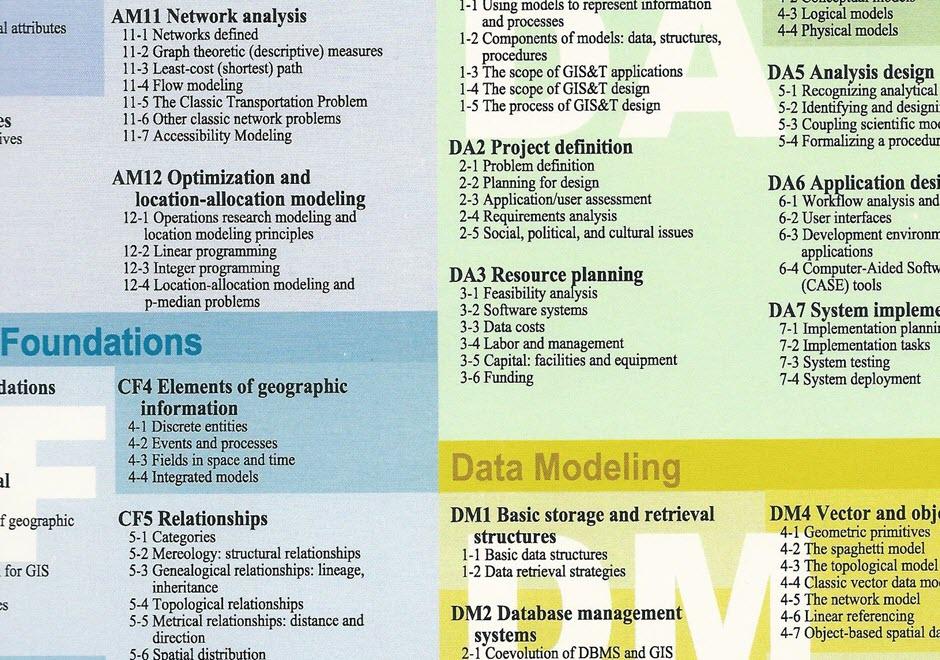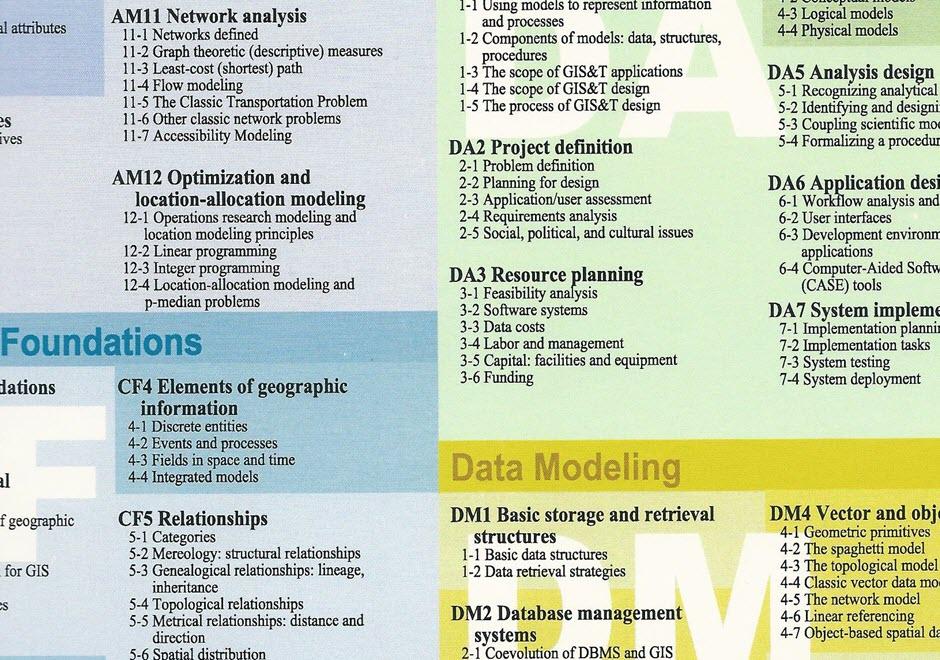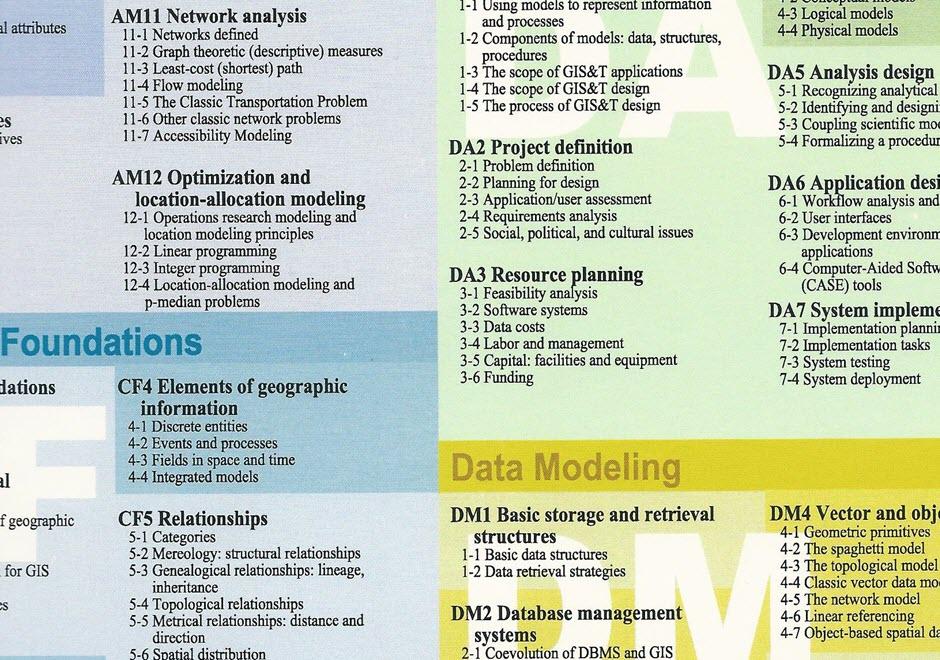AM-15 - Calculating surface derivatives

- List the likely sources of error in slope and aspect maps derived from digital elevation models (DEMs) and state the circumstances under which these can be very severe
- Outline how higher order derivatives of height can be interpreted
- Explain how slope and aspect can be represented as the vector field given by the first derivative of height
- Explain why the properties of spatial continuity are characteristic of spatial surfaces
- Explain why zero slopes are indicative of surface specific points such as peaks, pits, and passes, and list the conditions necessary for each
- Design an algorithm that calculates slope and aspect from a triangulated irregular network (TIN) model
- Outline a number of different methods for calculating slope from a DEM



AM-16 - Interpolation methods